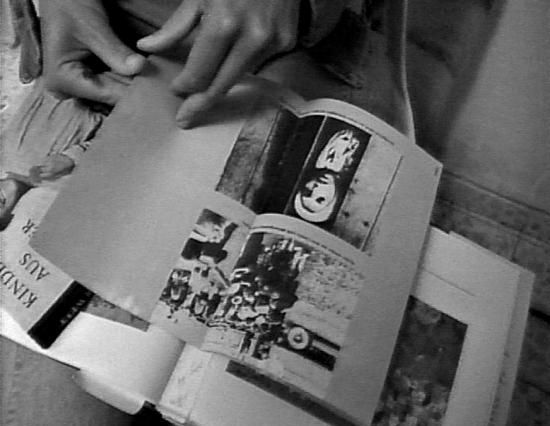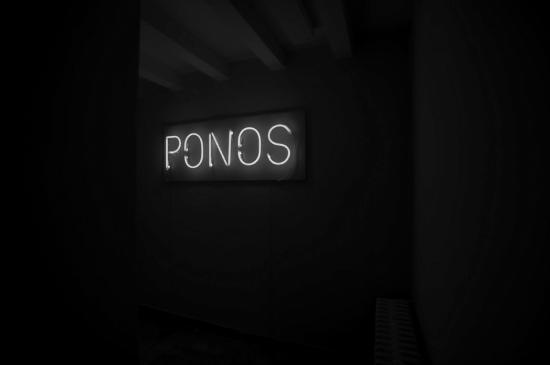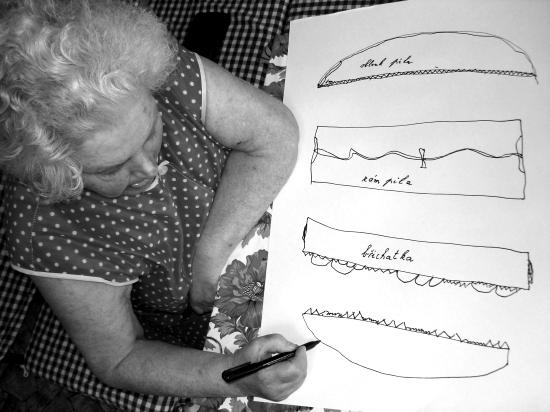Stalking With Stories: The Pioneers of the Immemorable
Stalking with Stories: The Pioneers of the Immemorable
September 19 to November 3, 2007
apexart,� NYC
Saturday, November 3, 4-6 pm
"On memory, nostalgia and the future" - a talk with Sanja Ivekovic and Svetlana Boym
With: Zbynek Baladran, Alejandro Cesarco, Felix Gmelin, Sanja Ivekovic, David Maljkovic, Ahmet Ogut, Katerina Seda, Artur Zmijewski
Curated by Antonia Majaca and Ivana Bago
Every new telling of a story perfects its narrative but also rearranges, edits and moves it further from its original, authentic plot. What do we remember? How do we remember and retell stories of the past? How do we project them into the future?
In his book of essays, Idea of Prose, the Italian philosopher Giorgio Agamben defines the concept of the "immemorable" as that which "skips from memory to memory without itself ever coming to mind [and which] is, properly speaking, the unforgettable." This immemorable, or unforgettable, is an unconscious element that infiltrates the conscious memory and creates an involuntary memory. As Agamben further explains, "The memory that brings back to us the thing forgotten is itself forgetful of it and this forgetfulness is its light. It is, however, from this that its burden of longing comes: an elegiac note vibrates so enduringly in the depths of every human memory that, at the limit, a memory that recalls nothing is the strongest memory." Located in the space between remembrance and forgetfulness, the conscious and unconscious, the immemorable brings to mind another concept, that of modernist nostalgia—a future-oriented longing for something that never existed.
The Russian writer and theorist Svetlana Boym defines a type of nostalgia that is restorative, that tries to reconstruct the lost root that nobody remembers. Reflexive nostalgia, on the other hand, does not try to reconstruct a space, but rather reflects its strength, power and time and can thus be not only retrospective but also prospective, directed towards the future. It is a thought of the past as a potential; i.e., it is about "watching dreams" through which we can think about the future. This triangle between Forgotten - Reconstructed - Projected forms a field on which the works in this exhibition inscribe their narratives, (un)intentionally taking up the roles of nostalgia triggers, causing perhaps brief and fragmented awakenings. These works point to the social impact of the invisible boundaries delineated by past and future expectations, drawing attention to the intersections of the psychological, social and physical spaces and memories that have been constructed in order to formulate cohesion between individual and collective histories.
The artist Artur Zmijewski met a German girl, Lisa, in Israel and made her the protagonist of his video of the same name. Inspired by a divine revelation, Lisa moves from Germany to Israel to start her new life there, claiming she is a reincarnation of a Jewish boy murdered at the age of 12 by the Nazis. Despite the fact that her living conditions in Israel are far from ideal and that most of the people there find her story absurd and appalling, she is persistent in not giving up on her beliefs. In Lisa's case, the collective feeling of guilt for the past deeds of Nazi Germany is a starting point for her nostalgia for the future that directs her radical decision.
The story actually has the structure of a medieval quest: The hero, or in this case heroine, embarks on a journey, begun in the context of an unfair and cruel social order. The quest ends in the establishment of a new, more just society. With its medieval literary form, the contemporary story appears romanticized and fanciful, leading to associations with heroism, belief, dream, change, revolution, and personal sacrifice. In the observer, these associations produce either contempt for the heroine's naiveté or nostalgia for the imagined time and belief that seems to have been there since long in the past, but is now irretrievably lost.
Zbynek Baladran, in KOLDOM, is inspired by the idea of an ideal apartment drawn by the Czech modernist architect Karel Honzik, which today is just a forgotten utopia. In KOLDOM, a simple pen drawing that the artist creates from memory becomes the archeological transcript of the modernist idea. The accompanying work, Glossary, takes the form of a poster where Baladran connects thoughts about modernity, divergent historical scenarios and a personal view of memory to touch upon utopian visions of the grand narrative of modernism that was characterized by a desire to wipe out the past in order to make space for a radically new, true present. As a result, today, when it seems that we are unable to create a brave new future based on our present, we are inclined to look for new sources of life through imaginative encounters with the past.
In Footnote #5, by Alejandro Cesarco, a barely noticeable asterisk takes center stage in the form of Letraset on the wall. The title of the work straightforwardly suggests its function, while the sentence at the bottom is given to describe the empty, referenced place: "To me, this has always been the heart of the mystery, the heart of the heart: the way people talk about loving things, which things and why." Just as the asterisk sign denoting a footnote seems to be fixed to an anonymous space, so the pronoun "this" in the footnote stands for an anonymous signifier and the even more anonymous signified. The mystery here is the mystery of language and love – the mystery of an unlimited number of word combinations that somehow never seem to reach the invisible target. As if knowing numerous ways to get there, but unaware of where the target is, the words locate the “this“ on the empty page for which the asterisk is searching. The work is an expression of a nostalgic insight into the inadequacy of language or, more precisely, the impossibility of reaching a satisfying connection between things, between people and things, and that which is signified as love. The footnote in the show refers to an indeterminate place filled with potential for resurrecting a slower time of love and contemplation.
Felix Gmelin's Farbtest, Die Rote Fahne II, shows two screens—one shot in 1968 in Berlin and the other shot in 2002 in Stockholm. In the first short film, a young man (the artist's father) runs through the streets of West Berlin in 1968 with a red flag to join other youth activists on the balcony of a government building. In Stockholm in 2002, artists re-enact the scene, but the conclusion isn't as glorifying. They don't find any young activists. Gmelin's work is a comment on today's situation of political indifference of youth and an expression of nostalgia for the "real," before irony. It represents the post-historical and postmodern recalling of the past that could also stand for a nostalgic escape to an idealized, simpler era of real community values.
Sanja Ivekovic's installation Ponos (Pride) features the reconstructed red neon sign of a former textile shop that existed in socialist Yugoslavia, where such monumental terms as Freedom, Knowledge, Unity and Victory were used as the names of diverse businesses. In the era of new transitional economy, these names were replaced with foreign or quasi-international ones such as X Nation, Eldi International, Terranova, etc. These new signs in the urban space are the marks of the takeover of new, Western capital. The artist’s restoration of an old neon sign, which she brings into the gallery environment, is an unpretentious political gesture where the meaning of the word is emptied of its monumentality and becomes a benign, almost modernist artifact recalling the political, and pointing towards the problematics of present and the future of the transitional state of Croatia, rather than its past.
David Maljkovic's works revolve around the emblematic architecture of the Memorial Centre for a Partisan Hospital designed by the modernist artist Vojin Bakic in 1981. The expressive and distinct style of these buildings are perceived as time capsules, spaces so intensively charged by their own era that they become a means of transfer for spiritual heritage relevant to both the present and the future. In a series of drawings and collages, the artist contemplates and envisions the possible future use of these archeological sites, offering, with refined irony, the possible "imaginarium" of new modernism(s). Imagining the future leads to nostalgia for the era that should appear. We can only envision this future in a poetical sense through the nostalgic gaze towards the past.
In the work It Doesn't Matter, the artist Katerina Seda discovers that her now-apathetic and introverted grandmother remembers, to the last detail, all of the items she once dealt with as an employer in a tool shop in a small village in Moravska during socialism. Seda documents her process of remembering as she makes a never-ending series of drawings of various tools from the store. The awakened memory functions as a trigger for returning to the present and, as the artist explains, a tool for constant resurrection from inactivity.
In the work Devrim (Revolution), Ahmet Ogut makes a wall drawing of the Devrim car that was originally
produced in Turkey in 1961 in the era of Turkish modernization. Next to the drawing is an accompanying text that gives an explanation of how the car, the first produced in Turkey, was made by order of the president of the Turkish Republic and taken by train to Ankara for him to test drive. As the engineers forgot to fill the tank with petrol, the car stopped after only 20 feet. The artist plays with the anecdote, ironizing a new nostalgia for the period of Turkish modernization that represents an ongoing invention and an object of restorative nostalgia. As the Turkish writer Esra Ozyurek points out, in a political constellation in which Kemalist Turks cannot locate modernity in the present or future of Turkey, or in the present of Europe, a specific form of non-Western modernity is being sought in the party regime of the early Republic.
In this era that is not only post-historical but also post-political, we turn to a form of "new modern" that is being internalized or even poeticized through an abstract idea that intertwines the past with the nostalgic prospect of the future through storytelling. Although using divergent languages and narrative procedures to bind together what might have been with what might come, the works in the exhibition find their root in an in-between zone of dissolutions and beliefs of the power of the past and the potential of the future. Navigating not only with retrospective but also prospective nostalgia through the real and imagined territories of time, the works here formulate an unstable and fragmentary cartography—a cartography that reveals how the personal and communal immemorable come together in the expectations of the new modern.
References:
Agamben, Giorgio. Idea of Prose. Translated by Michael Sullivan and Sam Whitsitt. Albany: SUNY Press, 1995.
Boym, Svetlana. The Future of Nostalgia. New York: Basic Books, 2002.
Özyürek, Esra. Nostalgia for the Modern: State Secularism and Everyday Politics in Turkey. Durham: Duke University Press, 2006.
Antonia Majaca and Ivana Bago
© 2007





